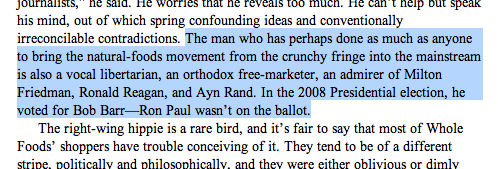Design Jobs
New York Times is looking for a Creative Technologist in New York, NY.
Teach For America is looking for a Front-End Developer in New York, NY.
Justin.tv is looking for a Product Designer in San Francsico, CA.
OPOWER is looking for a Senior UI Designer in Arlington, VA.
Fog Creek Software is looking for a UX and Graphic Designer in New York, NY.
The Patient’s Guide is looking for a Director of UI/UX in Newport Beach, CA.
View all Design Job listings
Programming Jobs
ActiveProspect, Inc. is looking for a Web Developer/Rubyist in Austin, TX.
Threespot Media is looking for a Web Software Engineer / Developer in Washington, DC.
UrbanDaddy, Inc. is looking for a Lead Developer in New York, NY.
VersaPay Corporation is looking for a Ruby Developer in Vancouver, BC.
Gemini SBS is looking for a Senior Rails Developer in the US (anywhere).
BuzzFeed, Inc is looking for a Perl Developer in New York, NY.
BlackBook Media Corp. is looking for a Systems Engineer in New York, NY.
View all Programmer Job listings
Business/Exec Jobs
The Huffington Post is looking for a Vice President, Technology in New York, NY.
View all Business/Exec listings
More jobs
View all of the jobs at
the 37signals Job Board.
Subscribe to the full RSS feed and be notified when new jobs are posted. Looking to contract a web design firm or freelancer for a project? Check out
Sortfolio.
2010: The year of the products
2009 was definitely the year of infrastructure at 37signals. We put in a lot of work behind the scenes to improve our hardware, software, and security setup. We also launched our biggest infrastructure project to date: 37signals ID. Infrastructure improvements are never over — we’ve got at least one big one brewing right now — but 2009 saw big progress on that front.
2010 is going to be the year of our products. With some of the big infrastructure projects behind us, we can focus more of our energy on improving our products. We’ve got some great ideas for new features, integrations, UI design/redesigns, streamlining common flows, etc. We have some new product ideas we may explore as well.
A new way of working
At the heart of the product renaissance is a new way of working. In the past each person at 37s has been pretty isolated. Everyone pretty much worked on their own own project. There was some overlap in a few spots, and occasionally a small team might come together to tackle something big, but most of the time it was every man for themselves.
We also had a tendency to pull people in different directions. We might ask someone to work on A, but then a few days later ask them to pitch in on project B, and then also ask them to help fix bug C. That makes settling into a focused zone really difficult.
In 2010 we’re going to change that. Here’s how:
Continued…
Fixed-scheduled productivity: “Fix your ideal schedule, then work backwards to make everything fit — ruthlessly culling obligations, turning people down, becoming hard to reach, and shedding marginally useful tasks along the way.”
A big part of this: saying no. The author gives Jim Collins as an example:
Even though Collins demands over $60,000 per speech, for example, he gives fewer than 18 per year, and a third of these are donated for free to non-profit groups. He doesn’t do book tours. His web site is mediocre. He keeps his living expenses in check so that he’s not dependent on drumming up income (he and his wife have lived in the same California bungalow for the past 14 years), and he keeps only a small staff, preferring to bring on volunteers as needed.
Also shows the freedom you get from having low overhead. The less you owe, the less you have to do things you don’t want to do.
Interesting: When you copy text from a New Yorker article and paste it somewhere else, it automatically includes a “Read more: URL” at end of paste.
Copied this:

Then pasted it into an email and it showed up like this (with “Read more” link):

NY Post (and others?) also doing this.
Update: Tynt is what these sites are using. “Measuring reader engagement by how often they copy and paste” talks more about how sites use the data generated by Tynt. [thx ZS]






